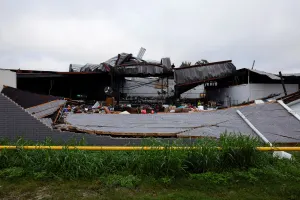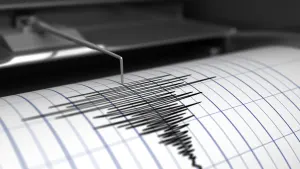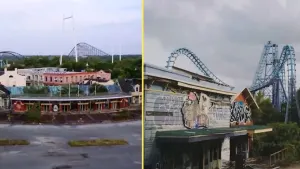
Report shows salmon numbers have slowed after B.C. landslide
A new report is providing some early insight on how last month's landslide into the Chilcotin River affected the run of salmon that swims up the Chilcotin and Fraser rivers every year to reproduce.
Monitoring efforts reveal the number of salmon that head upstream during August has slowed — but the exact scale of the disruption isn't yet clear.
"The landslide certainly had a role already in slowing the migration," Scott Hinch, a salmon ecologist at the University of British Columbia. "The issue is whether it's slowed it to the point that these fish are not going to be able to complete their migration up the Chilcotin."
According to an update from the Pacific Salmon Commission on Friday, more than 500 sockeye have been spotted upstream of the slide — less than one-fifth of the approximately 2,664 sockeye researchers expected to arrive under normal migration conditions at this point in the run.
At the end of July, a landslide blocked the Chilcotin River near Farwell Canyon, about 285 kilometres north of Vancouver. The canyon is a landmark on the salmon's journey to Chilko Lake, where they spawn.

(Government of British Columbia via CBC)
Hinch said the landslide physically obstructed some salmon from passing through. He said the debris that saturated the river afterwards could change how the salmon perceive the water and may hinder their ability to find their way to Chilko Lake.
As the banks of the Chilcotin River are still unstable, Hinch said the sockeye run could encounter more obstacles on their journey upstream.
No sockeye harvest in the Chilcotin River
In its own bulletin Friday, the Tŝilhqot'in National Government said this summer's run of Chilcotin River chinook and sockeye are at risk of dying out. To help them recover, the nations have issued a one-year pause on fishing the affected runs.
Jeff Grout, director of salmon management with the Federal Department of Fisheries and Oceans (DFO), said it's still too early to tell how much the slide has affected the run. He said DFO has installed new tools to monitor salmon upstream of the slide.
"At this point, we're not seeing active migration of salmon through the landslide area, but we're also not expecting large numbers to have been there just yet," Grout said Monday.
Grout said while this summer's cohort was one of the more abundant sockeye salmon runs in B.C., DFO expected the run to be smaller than usual. It has not issued any fisheries licences to actively fish for sockeye on the river system this year.

(Getty Images/Murphy Shewchuk/115755273-170667a)
Sockeye salmon run in cycles that repeat approximately every four to five years. Most of this summer's run is the offspring of sockeye challenged by the 2019 Big Bar landslide.
"We had some historically low returns then, and it's going to lead to low numbers of offspring as a result," Grout said.
While this year's run will face challenges, Hinch said their parents overcame similar difficulties.
"They're actually quite adept at getting through challenging areas and obstacles," he said. "Let's hope that they're able to get through this one."
Researchers expect about 117,000 sockeye to attempt the run to Chilko Lake this summer.
Grout says the scale of the landslide's effect on salmon will become clearer next week when most of the sockeye are expected to make their way upstream.
WATCH: First images of water breaching the Chilcotin landslide
Thumbnail courtesy of Getty Images/Maxvis/1055328966-170667a.
The story was originally written by Isaac Phan Nay and published for CBC News.









